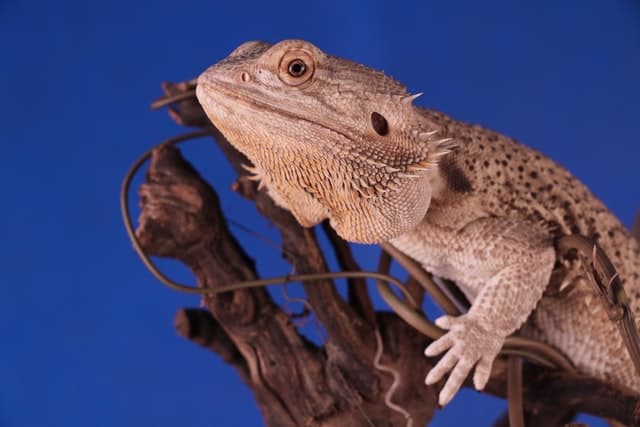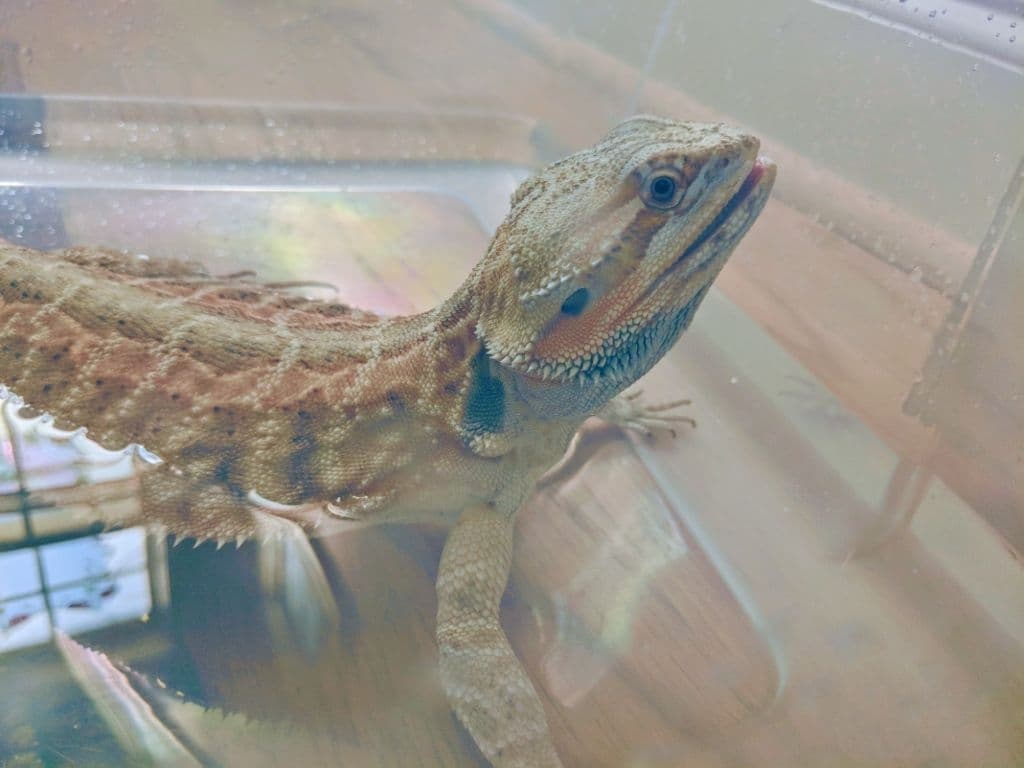A Guide To Taking Proper Care Of Your Bearded Dragon
Just bought a bearded dragon home? Happy and confused as to how to care for it at the same time? Read on for a complete care guide for bearded dragons.
Bearded dragons are a trendy choice for pet owners. They originate in Australia and can be found as pets in households for many years. It is important to remember, however, that bearded dragons are a wild species, so they require their lifestyle conditions to match the wild habitat as much as possible.
You should also be prepared for a long-term commitment when considering getting a bearded dragon, for these lizards are known to live for 10 to 15 years. You should be informed of the special care and dietary needs of bearded dragons before you get one. So let’s dive right in to learn some of the tips that will help you keep your lizard healthy and happy.
Get A Proper Vivarium

You must get the proper vivarium as bearded dragons require a particular type of environment to thrive in. The Royal Society for the Prevention of Cruelty to Animals in the UK states that the minimum size for the vivarium for an adult bearded dragon should be 120cm long by 60cm across and 60cm high.
You can select between plastic or wooden vivarium, although the vivarium made from plastic will allow more light inside the tank and be easier to clean. You can use wooden accessories to fill out the vivarium.
The vivarium needs to mimic the lizard’s natural habitat, so you need to include a hot end and a cool end. Temperature recommendations include between 38 to 42 degrees celsius for the warmer end and 22 to 26 degrees celsius for the cooler end.
It also needs to be well secure and well ventilated. It would help if you also created a bright and shaded area inside the vivarium. You should include a UV tube light inside the warmer side of the vivarium so that the reptile does not develop metabolic bone disease, which can ultimately shorten its lifespan.
Provide The Bearded Dragon A Proper Diet
You need to ensure the healthy and happy life of your bearded dragon by giving it a varied diet consisting of the right foods. Bearded dragons are omnivores, meaning you can feed them vegetables and insects as a staple diet. Insects such as crickets, cockroaches, mealworms, or wax worms can be a good treat for your lizard.
Your beardie will love salads made out of leafy greens such as colorful vegetables, kale, carrots, and carrots. You can grate the vegetables to provide a varied texture of the food. Remember to keep the food and water on the cool side of the tank. Avoid foods like onions as they are acidic and might upset your beardies stomach.
Give Your Bearded Dragon Enough Space
Bearded dragons love having a lot of space as they are primarily solitary creatures. Hence, it is required to provide a sizable tank to the beardie from a young age. It would help if you also kept removing accessories from the tank as the dragon gets older and bigger so they can continue to move about freely. You should ideally also not keep more than one dragon inside a vivarium.
You should handle your bearded dragon with care, picking the entire weight up and not just picking them up by the tail. Bearded dragons can feel stressed or threatened if other pets are around when you take them out of the vivarium. So please don’t take them out with your dog or cat present and avoid making any sudden movements while holding them.
Establish A Clear Routine For Them
It would help if you defined a clear routine for your reptile as it is an essential part of taking care of them. You need to help them understand the difference and transition of and from day to night. You can switch the lamps off to help them understand the cycle of day and night.
The natural habitat of the bearded dragons remains warm at night, but your pet doesn’t need to stay warm throughout the night. However, if you see that your home is getting a bit chilly, you can buy heat emitters for them and place them inside the vivarium to keep the temperature inside warm. You can use a thermometer to keep the temperature inside the vivarium monitored and adjust the temperature accordingly.
Shedding
The bearded dragons every four to six months as they turn into being adults form weekly shedding as they were younger. If the beardie encounters any problems with shedding, you can use lukewarm water soaks to loosen the skin that got stuck. It is common for the appetite of the bearded dragon to decrease while they are shedding their skin, and it will be interesting to see that sometimes they eat the skin that they shed once the shedding process is done.
Bathe Them When Required

Usually, it is not imperative to bathe your bearded dragon, except for a few conditions. Waste might accumulate inside the vivarium, with the beardie tracking through it. This condition does require you to give them a quick bath or at least wipe them down.
If your beardie gets constipated, you can soak them with lukewarm water. Usually, you would not be required to add soap or other cleaning agents while bathing your beardie unless it’s prescribed or recommended by the vet.
Brumation
Bearded dragons typically enter a state of semi-hibernation, known as brumation, during the winter. This will cause them to have an appetite that is significantly reduced from other times. Your beardie might be lethargic or is sleeping a lot.
You might confuse this state for sickness, so it’s best to have your beardie checked by a vet. While your pet is entering brumation, you need to give them less food proportionately and ensure they can keep warm by placing a heat lamp or light inside the vivarium.
Takeaway
Caring for a bearded dragon is not as complicated as many might think it to be. You should only bring home a beardie only after acquiring all the knowledge about their care needs and what are the costs associated with having them as pets. Once you know all the ropes, you will find that having a bearded dragon as a pet is very rewarding. So with proper husbandry and the knowledge to get you started with the pet, you can enjoy your beloved bearded dragon for a long time.



